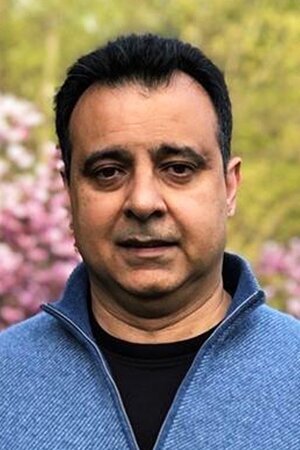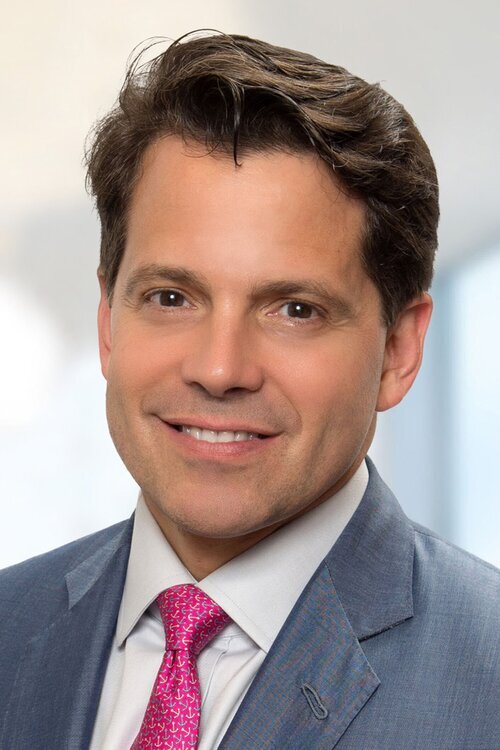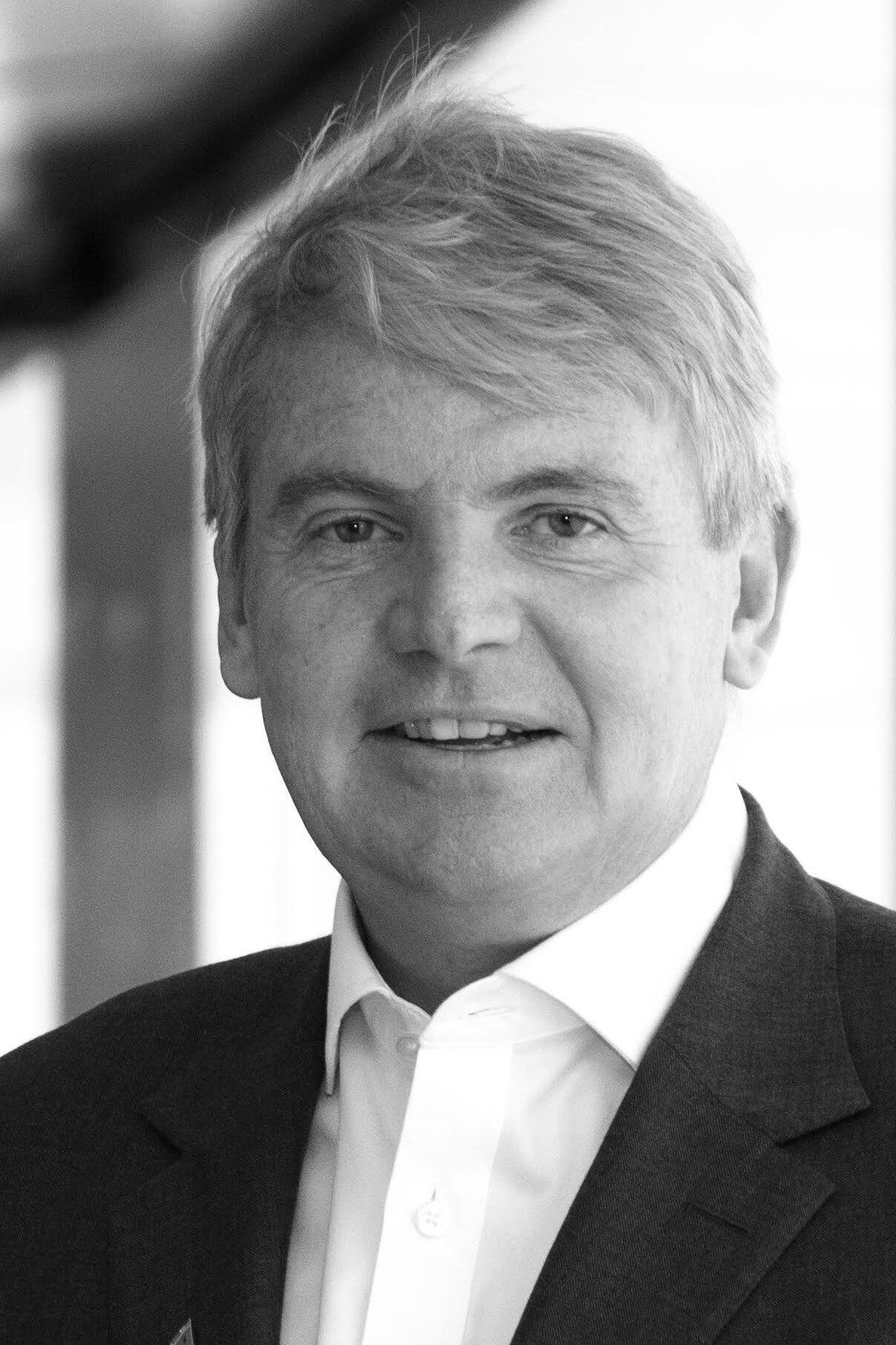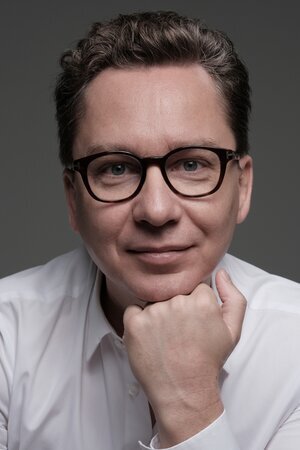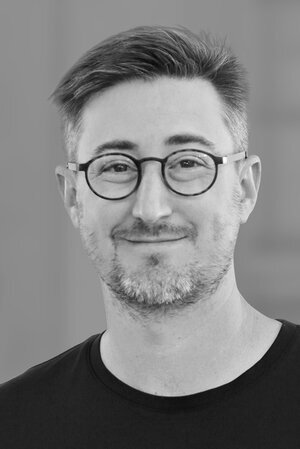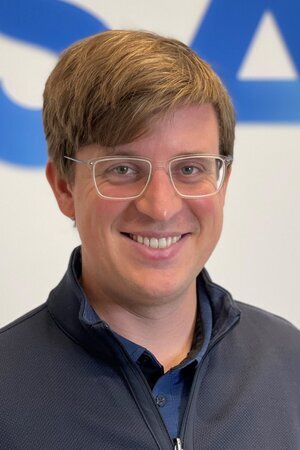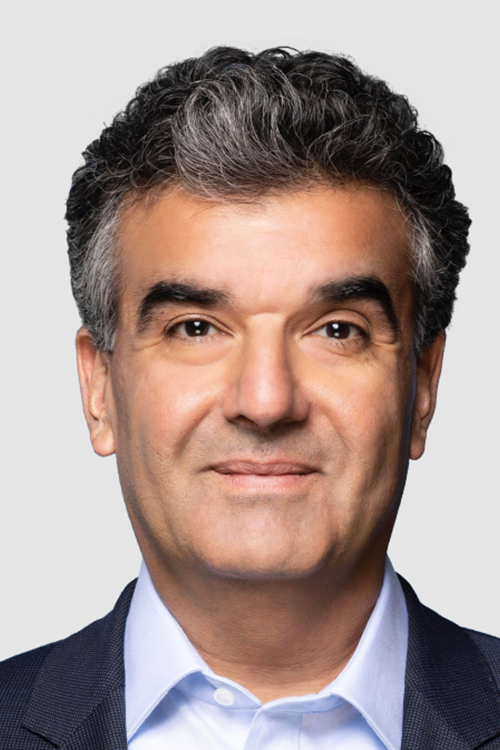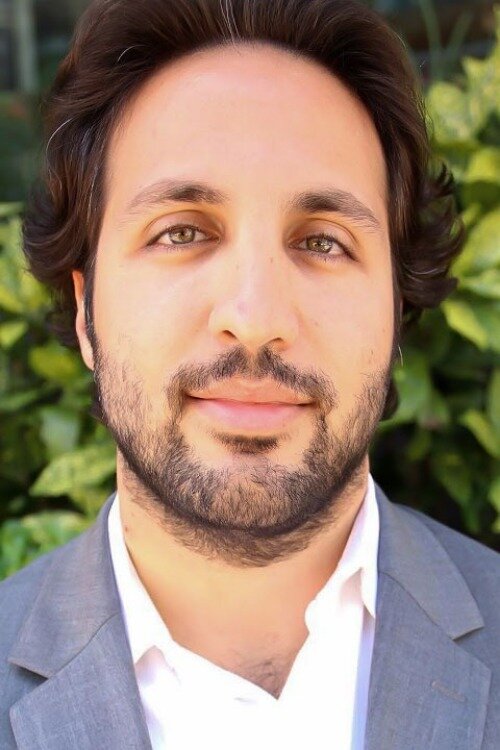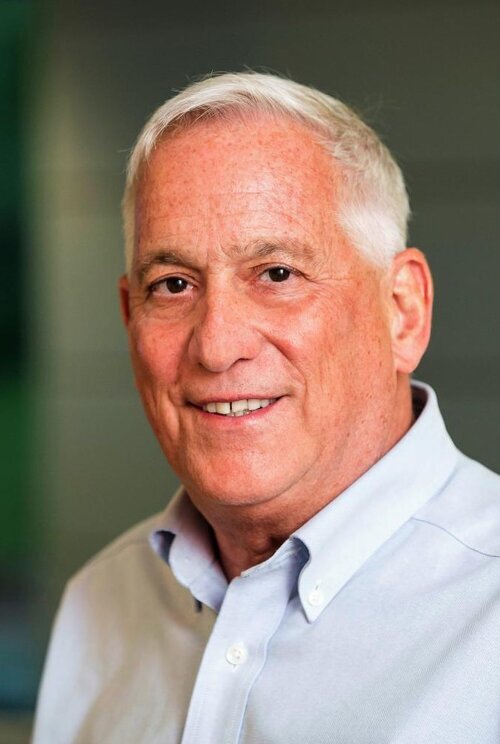“Gold has acted as a tremendous store of value for thousands of years. The problem is it hasn’t been functional. Gilded takes physical gold and makes it mobile, digital and usable.”
Ashraf Rizvi is the CEO and Founder of Gilded. Ashraf is responsible for the strategic direction and day to day running of Gilded. He has over 20 years of executive experience as Founder, Managing Partner and Global Business Head. Prior to founding Gilded, Ashraf was the Co-Founder and Managing Partner of SummerHaven Investment Management, a commodities management firm overseeing nearly $2 billion in assets for retail and institutional clients including endowments, foundations, and family offices. For over 13 years, Ashraf was a senior leader at UBS holding a variety of roles in New York and London including Global Head of Commodities Trading, Global Head of Metals, Global Head of Emerging Markets FX and Global Head of Credit Repo. Previously, he was Head of FX Options Trading in New York for Credit Suisse.
As a second generation immigrant, Ashraf Rizvi discusses how childhood experiences like seeing the fees and inefficiencies associated with remittance payments influenced the creation of Gilded. Rizvi explains the process of moving physical gold to the blockchain and the vast benefits it offers. He describes the current wave of tokenization and blockchain-enabled finance as the fourth revolution, noting its global impact because of the mobile devices’ ubiquity.
MODERATOR
SPEAKER
Ashraf Rizvi
Chief Executive Officer & Founder
Gilded
Anthony Scaramucci
Founder & Managing Partner
SkyBridge
TIMESTAMPS
0:00 – Intro and background
4:38 – Founding Gilded
8:10 – Moving physical gold to the blockchain
10:22 – History and value of gold
14:31 – Mechanics of Gilded
20:10 – Crypto vs. gold
22:30 – Gilded for Good and its positive impact
25:35 – Sustainability and lower environmental impact
28:10 – Tokenization of asset classes
32:10 – Gold’s performance and the fourth revolution
36:11 – Conclusion
EPISODE TRANSCRIPT
John Darsie: (00:12)
Hello everyone. And welcome back to SALT talks. My name is John Darsie. I'm the managing director of SALT, which is a global thought leadership forum and networking platform at the intersection of finance, technology and public policy. SALT talks are a digital interview series with leading investors, creators, and thinkers. And our goal on these talks is the same as our goal at our SALT conferences, which we're excited to resume in September of 2021, September 13th to the 15th here in our home city of New York for the first time.
John Darsie: (00:44)
But our goal on these talks and the goal that we have on these conference series is to provide a window into the mind of subject matter experts, as well as provide a platform for what we think are big ideas that are shaping the future. And we're very excited today to bring you a SALT talk with Ashraf Rizvi. Ashraf is the founder and CEO of Gilded and is responsible for the strategic direction and day to day running of the firm. He has over 20 years of executive experience as founder, managing partner and global business head.
John Darsie: (01:15)
Prior to founding Gilded, Ashraf was the co-founder and managing partner of SummerHaven Investment Management, a commodities management firm overseeing nearly 2 billion in assets for retail and institutional clients, including endowments, foundations and family offices. For more than 13 years, Ashraf was the senior leader at UBS, holding a variety of roles in New York and London, including global head of commodities trading, global head of metals, global head of emerging markets FX and global head of credit repo.
John Darsie: (01:45)
Previously he was the head of FX Options Trading in New York for Credit Suisse. And prior to that, he was a senior trader at Susquehanna Investment Group. Ashraf earned a Bachelor of Science in economics from the Wharton School at the University of Pennsylvania. He also served more than 15 years on the undergraduate board and the Europe, middle east and Africa board at the Wharton school.
John Darsie: (02:06)
Hosting today's talk is Anthony Scaramucci, who is the founder in managing partner of SkyBridge Capital, which is a global alternative investment firm. Anthony is also the chairman of SALT. And with that, I'll turn it over to Anthony for the interview.
Anthony Scaramucci: (02:17)
Through all these SALT talks, I'm surprised you haven't mispronounced my name once, just to give it to me a little Darsie.
John Darsie: (02:25)
Tony Scaramucci. I'll go with that one next time.
Anthony Scaramucci: (02:27)
You're going to do something like that, okay.
Anthony Scaramucci: (02:30)
Ashraf, you got an amazing career. So I want to start there. Let's go to the amazing career. You come out of school, what's the first thing you do?
Ashraf Rizvi: (02:40)
Well first, I'd like to say thanks a lot for having me on Anthony and John. I'm looking forward to the conversation. So, undergrad out of Wharton. Decided to start my first business venture right out of school with a number of colleagues. We started trading in Philadelphia, grew to New York, Chicago over the years, and it was a great learning experience. We were trading FX derivatives. It was a phenomenal time in the marketplace and we had a great opportunity to learn and grow as individuals.
Ashraf Rizvi: (03:12)
And then ultimately, ended up at Susquehanna where we got the opportunity to trade in a bigger environment over the counter. Was involved in the early days of the ERM breakup. And of course, the demise of Sterling on Black Monday as well. So it was a great learning experience and a great opportunity to learn what it was like to be an entrepreneur.
Anthony Scaramucci: (03:32)
Okay. So I'm going to stop you there because you got a lot of young listeners. When you say the ERM breakup, what you're referring to is the exchange rate mechanism that dissolved in 1992. There were short positions put on. One of the most famous ones was Stanley Druckenmiller and George Soros, where they were shorting the pound, because they knew that the Brits wouldn't be able to support the pounds valuation and they would have to accept some level of devaluation.
Anthony Scaramucci: (04:02)
I think it's a good point because you have a lot of history with this. We've been devaluing our Fiat currency since 1971, August of 1971. The US government under Richard Nixon's orders took the US dollar off the gold standard, $35 an ounce. Today, I guess it's around $1700 or so.
Anthony Scaramucci: (04:23)
And tell us why all of these things are important and how they lead up to and are the precursor to you being the founder of Gilded.
Ashraf Rizvi: (04:37)
So I think the story really starts at that, I view it as my entire life. I feel like I was getting ready to do something like Gilded. And I point to maybe a few things. So one, the extensive experience in the financial markets. So having lived through that breakup of ERM, Black Monday, being involved in the financial markets, whether it was dealing with central banks, high net worth clients, family offices, institutional clients who want good money management, all of these, I think, contributed to what I've been able to do.
Ashraf Rizvi: (05:16)
I think also the other part that was very important is that I had the opportunity to start two different companies that were successful. One right out of school that we just touched on. Another that was started during the great financial crisis, that grew to manage a few billion dollars in commodity assets. And then there's also a personal touch to it. So I'm a second generation immigrant. My parents are originally from India. They moved in the 60's. I grew up in a small town in Iowa, so classic Americana. And I still remember, my parents used to send money back home to their family and help them be successful in difficult economic times in the 70's. And I remember my dad telling me about the fact that the gold price was, as you touched on, $35 an ounce back then. The rupee was seven and a half to the dollar. Today it's 74.
Ashraf Rizvi: (06:10)
And so, what we're looking at is a world where we've seen currency debasement. The dollar has become less valuable. The rupee has become less valuable. All currencies have become less valuable. Their purchasing power has shrunk tremendously. From 1971 on, the dollar has lost 95% of its purchasing power. And you know that, we all know this. If you go to the store and you buy eggs or milk or anything, you know that it costs a lot more than it used to.
Ashraf Rizvi: (06:41)
And so I think this is really what's driving the push now more than ever for things, assets like gold, which has served as a tremendous and a historic store of value for thousands of years. The problem is, it hasn't been functional. And so what Gilded really does, is we take physical gold and we make it digital, mobile and usable, which is really about making it functional. How can we make it operate like money without all the negatives of money, which is that, there's the general currency debasement across the world, the big issuance of debt and spending, which ultimately is going to be hard to pay back. And so here's something that we can use that's stable, supportable and something that can hold its value over the long term.
Anthony Scaramucci: (07:32)
So let me rephrase it, just so as I know that I have it, and maybe John could also help me with this. You are basically a warehousing gold. And so you're going to then digitize it over the blockchain so that people can own portions of the gold that you're warehousing. They're buying it from you. Do you think that that goal then would trade differently than just spot price gold in the marketplace? Or do you think that the fact that it's been enhanced by a digitalization or the digital model, the blockchain, makes it more valuable?
Ashraf Rizvi: (08:11)
That's a really good point, Anthony. So I think it makes it much more valuable, in the sense that it becomes functional. And so by that what I mean is, that you get all the benefits of owning the physical asset. So first, what's the benefit. One is that it's your title and it's your property. And so if we think about the fractional reserve banking system, you don't have that. When you deposit money, when any of us deposit money in a bank account, it's no longer your money, it the bank's money, and they give you an IOU.
Ashraf Rizvi: (08:40)
When you have securities or other assets often that you hold, they become the custody of some other party at the end of the day. And you have counterparty risk. Let's think about the great financial crisis. You might have securities at an institution that could go under. In our case, in Gilded, it's not us who are the custodians, it's your property, it's your title. It's sitting in a Brink's vault, fully insured, audited, both for the quality of gold, but also that it's audited that you are holding is immutably stored on the blockchain.
Ashraf Rizvi: (09:10)
So you get all of those features, but you also get the additional feature of the fact that we can make it functional. So in certain countries such as India and middle east and Turkey, we already have product where you can send it to someone else instantaneously. You can own the entire bar. You can own a partial bar and it's still your property, your title. We aim to launch in the US soon. We have to get some regulatory approvals that allow us to be able to do the send functions, but we'll be able to at least allow you to be able to buy and hold and store, so that you have a better store value. So that's really where I think the value proposition is, is that it's your asset, but it's a functional asset, rather than what a lot of people remember it to be as a very expensive paperweight.
Anthony Scaramucci: (09:57)
Okay. So the non-Bitcoiners out there, the Bitcoin skeptics or the crypto asset skeptics, they should like this, right? They're getting the best of both worlds. They're getting a material money, hard currency. However you want to describe what gold has traditionally been over the last 5,000 years. And they're getting the convenience and the portability and the transferability of the blockchain.
Ashraf Rizvi: (10:22)
Exactly. So I think our core vision is about freedom from Fiat. And as you know, Anthony, gold has served as freedom from Fiat for 3000 plus years. It was the original money. It served as the foundation for money for thousands of years. And up until 1971, it backed pretty much all the currencies through the US dollar, which ultimately was tied or pegged to various other countries currencies. Since then of course, we've really floated freely. So, that I think is an important part of it.
Ashraf Rizvi: (10:57)
Of course, the vision is to make it digital, mobile and usable, as we've talked about, and really make it functional. And so I think for investors, I like to think of it as freedom of choice. Depending on what it is that you want, if you want that physical asset, as well as the digital component, I think we're a great place for you to go. I think it's all also valuable in the sense that we know that gold is pretty stable. The price isn't moving a lot on a day to day basis. It's it's not a get rich, quick, fast. It's about stay rich quick for a long period of time. And protect your wealth, store your wealth. And do it in a safe, secure way, but also have the ease of use where we can use a mobile device to be able to access the marketplace and to have the benefit of the liquidity of the entire gold market, which is huge. On a daily basis, trading close to $200 billion a day, which makes it roughly the fifth largest currency in the world.
Anthony Scaramucci: (11:58)
And listen, I'm a Bitcoiner, but I'm also, have a huge amount of respect for gold. I think you've had 5,500 years of history, if not longer. If you go back to the tombs, Egyptian tombs are all layered in gold. So obviously it's had value. It's held value throughout generations, throughout world history. So tell us how you're going to create demand for this. What is the audience that Gilded is going to be attracting?
Ashraf Rizvi: (12:29)
So I think the great thing about this product is that, I think the audience is everyone. So whether you're an individual, investor, whether you're a hedge fund asset manager, pension fund, institutional client, corporate, or even a government, you're a target audience for us at the end of the day.
Ashraf Rizvi: (12:47)
Why? One, store of value. Everybody's looking for better stores of value. Gold is a great store of value. It has served that purpose, as you just mentioned for thousands of years. And people know it, they trust it and it's quite stable. So that's most important, is, let's take that store of value that we know and let's make it functional. Let's make it do things that you can't do with it if you just buy the brick and put it in your safe deposit box or in your house. Let's make it movable.
Ashraf Rizvi: (13:22)
So in other words, let's offer the ability to send it to other people. And so in the US, we hope to be able to offer that in the coming months once we have regulatory approval. We're already doing it in other countries. Let's make it possible to earn a yield, yield enhancement product. Let's tie it perhaps to a credit card or debit card. Let's make it possible to take a loan against that physical gold. It's your property, it's your asset. So you can take a much higher loan than for example you can with the securities markets for an ETF or something like that. Let's make it pledgable as collateral. So if we can make it pledgable as part of repo or other factors that, other mechanisms that can allow you to access liquidity. All of these become possible when we digitize that asset, which are not possible when it's just a physical asset, as has been for thousands of years.
Anthony Scaramucci: (14:20)
And tell us about the fees. And how do you get access first of all? Do you need to go through your digital app or are you going to be on people's platforms? And then what are the fees?
Ashraf Rizvi: (14:31)
So the fee, there's really three layers of fees and it depends on what you use. So first the fee is for onboarding. So you buy the asset and now you've got it in the vault and you get all the benefits of having that. So there's a small fee for that, typically 1%. And now you own that physical asset at the end of the day.
Ashraf Rizvi: (14:53)
A second fee is if for the storing, the validation, the audit of both the gold, the blockchain of your respective ownership, and that's typically 50 to a hundred basis points, depending on the size of your holdings. And so here, it's applicable, as I said, for the retail client all the way to a corporate or government. And the nice thing is, if you're sending gold to another party, it's free. So you can think of it as a super highway, in that, once you're on the highway and you have access to the asset, now you can and move it freely, 24/7 [inaudible 00:15:33] So those are the two primary fees.
Ashraf Rizvi: (15:37)
A third fee is, in the event we offer you a premium type of service or additional service such as a loan or a yield enhancement product, or a ability to pledge as collateral, then we may do a revenue share with the party who helps us facilitate that. But for typical, for most people, it'll be the purchase and then the storage and validation. And I'd like to just point out Anthony, which I think is very important is that, compared to if you did this yourself, or you did it online or bought the physical asset yourself, these fees tend to be considerably cheaper than what you would be paying if you're doing it by yourself.
Anthony Scaramucci: (16:21)
Okay, very informative. How is the gold secured from a physical and cybersecurity perspective?
Ashraf Rizvi: (16:29)
So that's something of course that's very important to every investor. And you know this Anthony, from what you do is that, safety of the assets for the clients is paramount. And so we do a number of things here. So one, first of all, the asset itself is sitting in a Brink's vault. Brink's has more vaults than any other facility in the world. They have them everywhere. We have Swiss based Brink's vaults. We can also store in New York, London, various other cities and countries around the world.
Ashraf Rizvi: (17:01)
Fully insured by Lloyds of London. Audited, physically the gold is audited within the vault, that it exists and it's the real thing. And of course, auditing of your holdings and the blockchain in which it's kept, which is Hyperledger. So it's a permission blockchain. So full KYC/AML compliance. So we're very sensitive toward the regulatory side.
Ashraf Rizvi: (17:25)
And then from a cyber security perspective, we're leveraging Microsoft Azure, AWS major cloud service providers, which have built in significant cybersecurity. And then we're also focusing on it through other vendors. And also on protecting your PII, where we segregate that and split that from anything we store in the blockchain. So your personal information is retained completely separately.
Ashraf Rizvi: (17:51)
And so all of these things are very, very important. But of course, one of the most important things here is, you own the physical asset. Somebody can't steal your digital part, and then that's it. You still always have the physical asset and you also have the right and the ability to take physical delivery if you want.
Anthony Scaramucci: (18:10)
When are you launching in the US, Ashraf?
Ashraf Rizvi: (18:13)
So we're hoping to go live here on beta, early beta, here in the next few weeks through the Apple store and through Google Play. And I believe that by SALT we'll be in the marketplace. And then we're waiting for a approval from regulators for cross border activity. And so what that means is, that we have to get certain money transmission license, et cetera, which we've already in the process of applying for. And that will allow us to make it possible for party A to send to party B instantaneously, 24/7.
Ashraf Rizvi: (18:48)
We do have that ability to all already do that in India and various other countries that we're operating in. I'll just point out that the US is a little more complicated because that activity is governed on a state by state level. And so you have to tackle each state independently. There's no way to do it at the country level. And some other places you're able to do that.
Anthony Scaramucci: (19:15)
Before I let you go, I got to ask a question. John Darsie's going to take over here in a second. He's going to, of course, try to outshine me. And the good news is, I know he is at his house right now, and I only live two miles from him. If he tries to outshine me Ashraf, I'm going to run him over with my car sometime this afternoon. So that's just a threat, John. So you can report that to the local police.
Anthony Scaramucci: (19:39)
But before I bring John in, who will ask [inaudible 00:19:43] questions, of course, what do you say to the crypto people? What do you say to Bitcoiners, people in the space of Ethereum? What's your reaction as a advisor, as a business person? Should they be selling their crypto to own Gilded and gold? Should they own some of it? Both? What do you say?
Ashraf Rizvi: (20:11)
Well, first I'll start by saying, we're not crypto, and we're not a stable coin, and we're not part of the Frank [inaudible 00:20:18] banking system. So that's first thing, in that, we're providing you the ability to own that physical asset, and then making it digital, mobile and usable. That's item one. And the second thing I think I would say is that, we're about freedom of choice. People have an interest in non Fiat assets. And I think gold has been the original non Fiat asset for thousands of years. And I believe it'll continue to exist. And we can make it more functional than it has ever been before. And that's what the objective Gilded it is.
Ashraf Rizvi: (20:58)
I think for all investors, whether it's individuals, hedge funds, asset managers, pension funds, governments, they need to have a variety of assets in their portfolio. And I think there's a place for all sorts of different assets, whether it's stocks or bonds or gold, or digital gold in our case, or crypto. And that's ultimately up to the users. But at think we occupy a different space. I don't think we have conflict with crypto or, stablecoin or Fiat for the matter. I think we just offer a different solution that can be helpful to people, help ultimately in their store of value, protect their life savings and be non-correlated assets to stocks and bonds, which when they tend to sell off, gold tends to shine very brightly. And so there's a very important place that it serves. And I think we can make it more functional than it has ever been before. And that's the whole mission behind Gilded.
Anthony Scaramucci: (22:07)
It's a great message and a great product. I'm going to turn it over to John.
John Darsie: (22:14)
Ashraf, it's great to have you on here. We look forward to having you at SALT as well. What is Gilded for good? And how do you see that part of your business or the initiatives that you work on? How do you see that developing over the next five to 10 years?
Ashraf Rizvi: (22:30)
So Gilded for good is something I'm really excited about. I think it's an opportunity for me, after having done so many things in Wall Street to really, to do something that can make a positive impact on society. And so how can we do that? So I think there's many ways. So one, let's look at my own personal case of my parents sending money back home. Remittances, $600 billion market average fee that people are paying is 6% to send money back home to their loved ones. We can make that cost at least less than 50% of that. And so here's an opportunity where we can have a positive impact.
Ashraf Rizvi: (23:09)
Second, is think about the billion people on the planet who are unbanked. The financial system has not served them well. We're already in conversations with various firms that, how can we allow these folks to be able to complete the KYC/AML process and able to hold that asset that they want, which gives them store value and be able to plan for their financial future.
Ashraf Rizvi: (23:38)
Third. The hundred dollar bill is the most laundered instrument in the world. Gold is second and art is third. By holding that gold in a vault and having it digitized and traced, it means we can take a certain amount of that asset out of the system where it can't be laundered. And we know exactly who's got it, where they're keeping it. And that's good, whether it's from a CRS or FACTA perspective, but it's good from a government regulation perspective as well.
Ashraf Rizvi: (24:11)
And we can also make an impact on the environment. Most of the gold that exists in the world, 200,000 tons is already been taken out of the ground. That's 80% of all the gold there is in the world. That only leaves 20%. 1% comes out per year. So we by re-refining existing gold or using gold that's already in a vault, we can reduce the burden on the environment by not moving it. We're not consuming hydrocarbons. We're not putting it on a plane or on a truck. It's just moving from, let's say, me, to Anthony, or it's staying in our possession, it's staying in a vault. Very low energy usage. And so I think all of these are ways that we can have a positive impact on society.
John Darsie: (24:57)
The sustainability piece was another interesting piece to me. There's a lot that's been made in the cryptocurrency world about Bitcoin, the energy that goes into Bitcoin mining. Oftentimes Bitcoiners, they retort to those accusations as well. Mining precious metals and transporting precious metals and the entire security ecosystem that exists around safeguarding fiscal assets, that uses a lot of energy as well. How do you think that Gilded and these types of technologies are going to disrupt sustainability questions around gold and precious metals, and what's your view on that sustainability piece?
Ashraf Rizvi: (25:33)
I think that's a great question, John. I think the key here is that there's a big [inaudible 00:25:40] cost. As I said, 80% of the gold is already out of the ground. And it's sitting in really, three or four places. Really three main places, but four in aggregate. So one, half of it is in jewelry. 25% is in bars and coins. And 20% is in central banks. And then the balance is basically in functional applications, like yours and my iPhones or Samsung devices or laptops, computers, various other in industrial applications.
Ashraf Rizvi: (26:15)
And so that's already out of the ground and we've already paid the cost of that. We don't need to pay an additional cost. Now we're just storing it at the end of the day. And that's a relatively low cost to exercise. And as I said, relatively small amount of the gold comes out. That part is a dirty business. And I think the mining companies are doing a better job of addressing that, but it's not something that we have to maintain on an ongoing basis. Once you take it out, you put it in a vault and stays there. So I think that's very important.
Ashraf Rizvi: (26:45)
And I think the other thing is, there is a benefit to society if we can cut down on illicit and [inaudible 00:26:51] activity. That's positive for society. And so whether it's the hundred dollar bill, or a bar of gold, or art that's [inaudible 00:27:00] illicit, anything that reduces that, or can reduce things like human trafficking or child labor, all of these, these are all often associated with various instruments that people are using in order to be able to get paid so that they can't be traced. And so this is something that we can clearly cut down on, and I think that's a positive from a social good.
John Darsie: (27:24)
So your career that I read at the beginning of this SALT talk, you're steeped in financial markets. You've been involved in FX markets, commodities markets, you're a markets guy. And we had another group on for a SALT talk recently. The CEO was talking about how he thinks of eventually, there's a world of crypto, there's a world of FX, there's commodities, there's the traditional stock market today. He thinks that with the rise of blockchain and other technologies, that those markets, that the lines between them are going to blur.
John Darsie: (27:57)
Would you agree with that sentiment, that you think that eventually there's going to be tokenization blockchain technology that applies across all kinds of different asset classes? And what do you think the implications of that are for how financial markets operate?
Ashraf Rizvi: (28:10)
So first I think is, about asset classes. And so I agree with you and your previous speaker that, I think lots of asset classes are relevant to any portfolio. That's modern portfolio theory, goes back to in the 1950s, Harry Markowitz. And so what do we want? We want asset classes that generate positive returns that are non-correlated. That's the goal of every, whether it's a hedge fund manager, pension fund, individual, everybody desires that. Well, I think whether it's stocks or bonds or gold, they all fit that bill, in that they generate positive returns, non-correlated. And I suspect your prior speakers touching on the same point with crypto, or even whether it's wine or art, think there are many assets that fit these bills. So they're relevant from that modern portfolio perspective. So I would agree with that.
Ashraf Rizvi: (29:12)
The second part of the question is related to blockchain. So I have to admit I'm a huge fan of it. And I suspect you and Anthony are as well for a lot of reasons in that, we both share this common experience of managing money as a fiduciary for other people. And we've all had to deal with the fact that we have data, whether it's about our individual trades or managers, et cetera, that we have to retain. And then our auditor has that data. And then the exchange has that data. And our administrator has that data.
Ashraf Rizvi: (29:46)
So all these different parties have to get this data in order to perform their function. And so I remember that this was an enormous exercise. You have to validate it, you have to reconcile it. With blockchain, we all have the one set of data, which is the source of truth. And we can all share that. What a powerful solution that is for any financial firm and for anybody that, whether it's my data, my auditors can have it, other parties that I work with have it. And we all know have the exact same thing. I think that's a really powerful thing, and it's going to be huge in the financial markets.
John Darsie: (30:28)
The last question before we let you go. Over the last decade or so, obviously cryptocurrencies have been on fire. If you look at percentage appreciation of those assets, from very fringe pieces of technology, to now somewhat mainstream, especially if you look at things like Bitcoin and Ethereum. Gold during that period hasn't performed as well. Anthony actually did a recent debate with Peter Schiff on gold versus cryptocurrencies. As Anthony said, he's not a gold bear per se, but it was just an intellectual conversation around the future of alternative stores of value.
John Darsie: (30:58)
But I think gold in the context of something like cryptocurrency obviously doesn't feel as technologically forward or advanced as this new world of blockchain digital assets. Do you think companies like Gilded are going to help transform the image of gold and potentially help gold rebrand itself and potentially drive better performance over the next decade? Or do you think it's more of something you're just trying and get people access to what you think is a very stable store of value and insurance against a lot of craziness that happens in the world?
Anthony Scaramucci: (31:29)
But Ashraf, just to iterate, before you answer the question. In that debate with Peter Schiff, I was just talking about the virtue of Bitcoin. He thinks Bitcoin is worthless. And so I'm just saying to him, it's not worthless. Here are the properties of why it isn't worthless, but I have a tremendous amount of respect for gold. I'm trained as an economist like you, and I understand the value that gold has had in our civilization for millennium. And, and so therefore I have a tremendous amount of respect for gold. It's not a debate with me, whether about gold is going to exist or not. I think it's more about will Bitcoin be here. I believe it will be. But go ahead. Answer the question.
Ashraf Rizvi: (32:08)
I agree. Let's start at the basic level. So first it has been a store of value for thousands of years and has been a good store of value since it's really been separated from government control, which really starts in 1971. And as I said, 8% a year for the last 50 years. And I think you touched on and a key point there, John, which is that, that doesn't mean you get 8% every year. It doesn't mean you get three quarters of percent every month. It's not a financial instrument, like a T-bill or a T-bond, or a corporate bond at the end of the day. Of course, there you take a different kind of risk. Maybe you don't get paid at all. And they default.
Ashraf Rizvi: (32:47)
So you get the asset, you get the return from the asset over long periods of time. But over shorter periods of time, there may not be any return or it could even go down. So it's similar to currencies, for example. And so I think the last 10 years we've seen that. It has been pretty flat. But if we look at the last 20 years, since the beginning of the millennium, gold has rallied 9% per year, and it's done better than stocks and bonds. Also, if we look at the bigger picture, 1980s, 1987, dot-com bubble, great financial crisis, 2020 COVID, in each of these cases, these were stress events where stocks and other risky assets fell tremendously. In most cases, 30, 40, even 50%. Gold in all of those cases went up. This is part of portfolio exercise. And this is part of more modern portfolio theory. And this is why people should own the asset.
Ashraf Rizvi: (33:47)
With regards to the other thing that you touched on, which is bringing it into the 21st century, I think we're living in the fourth revolution. That's where we're at. The first one is really about the UK. And the second one of course is about Detroit and mass production. And the third one is largely about Silicon Valley and technology. This fourth one, I think most people believe is a global phenomenon.
Ashraf Rizvi: (34:20)
And so here's an opportunity where we can impact people on a global basis by leveraging technology and leveraging that most ubiquitous devices, which is a smart phone or a mobile phone, which most people on the planet who are over 10 years old, possess. And so now we're making it possible for them to access this store of value that they'd like to have, own it, as their property, their title, and have it stored way in a safe, secure way, and be able to do it from their mobile phone. And they can log in, create account and make a purchase in just in a matter of minutes from anywhere. That I think is about bringing it to 21st century. And that's, I think, where the world is headed is, that more solutions and products will be all about ease of use and access to what people desire and want. And here we're making it digital, mobile and usable.
John Darsie: (35:16)
Well Ashraf, it's a pleasure to have you on. What you've built is a fascinating innovation. Again, that you just touched on, that it's bringing something that's been a store of value for thousands of years into the fourth revolution that's going on here with digital assets. So congratulations on all you've built and continue to build. We look forward to seeing you very soon at the SALT conference in New York. We're very excited. In the New York post, we have Eric Adams, the mayor of New York confirmed his attendance recently, reaching an olive branch to the business community in New York, as new Yorkers are very excited about that. And everything related to the conference. We have a great lineup, including yourself. So thanks for joining us. Look forward to seeing you soon.
John Darsie: (35:55)
Anthony, you have anything for Ashraf before we let him go?
Anthony Scaramucci: (35:57)
I'm just letting you know, I'm going to invite you back on SALT Talks if you digitize those Muhammad Ali signed gloves behind you, and you offer me them up in an NFT, which I'll gladly purchase. Those are some hot gloves Ashraf.
Ashraf Rizvi: (36:11)
Well, look, John and Anthony, thanks so much for your time. I really enjoyed the opportunity to have the conversation. Again, just wrapping it up. Gilded, where it's all about making physical gold digital, mobile and usable. And really making that asset functional like money and being able to offer all the different services that people want and desire. Whether it's being able to borrow against it, create a return, be able to do it on a easy to use mobile application. And so that's what we're really excited about. Our vision of course, is about freedom from Fiat. And I want to thank you for your time and I really enjoyed the conversation. And I'm looking forward to participating in SALT.
John Darsie: (36:51)
Thank you Ashraf. Thank you everybody for tuning in to today's SALT talk with Ashraf Rizvi from Gilded. Just a reminder, if you missed any part of this talk, or any of our previous SALT talks, you can access them on our website at salt.org to view all of these episodes that we've done over the last 18 months on demand.
John Darsie: (37:07)
We're also on social media, @SALTConference on Twitter is where we are most active. We're also on LinkedIn, Instagram and Facebook as well. And please spread the word about these SALT Talks. Again, we love educating people about innovative companies, innovative ideas and Gilded is certainly on the frontier of FinTech innovation with what they're doing around gold.
John Darsie: (37:27)
But on behalf of Anthony and the entire SALT team, this is John Darsie signing off from SALT Talks for today. We hope to see you back here again soon.

